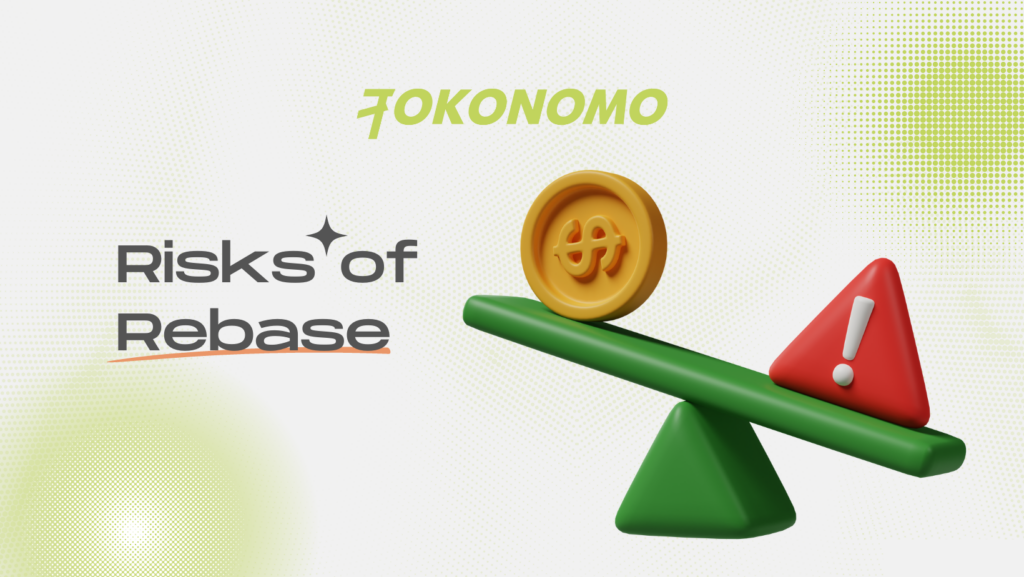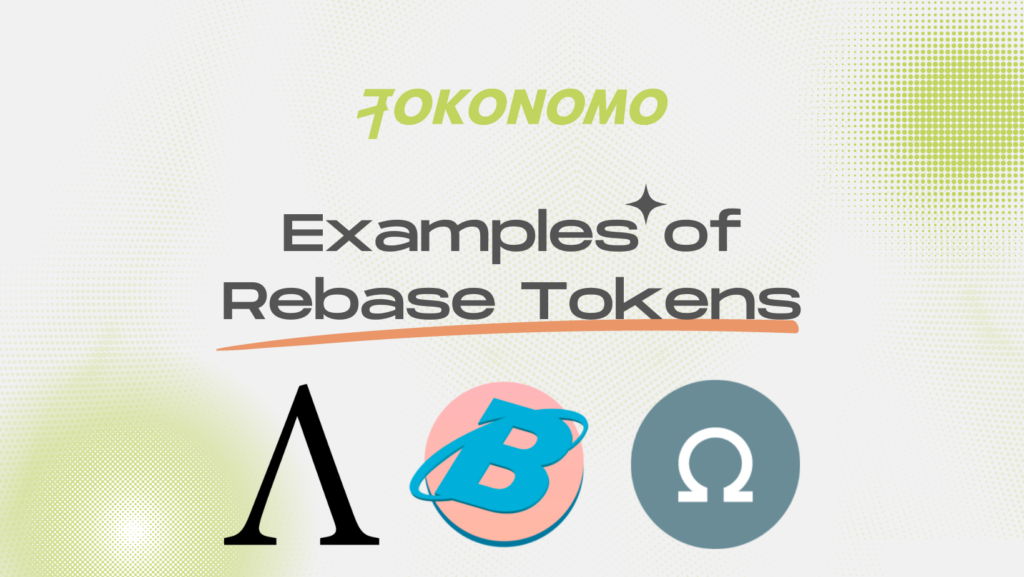What is a Cryptocurrency Rebase?
Cryptocurrency rebase is a monetary policy adjustment process that aims to stabilize the price of a cryptocurrency by adjusting its total supply. This process is performed by a smart contract and is typically associated with tokens that have an elastic supply.
Rebasing is a relatively new concept that emerged in the crypto space in 2017. It was initially introduced as a solution to the problem of price instability that was rampant in some tokens due to the fixed supply nature of their tokenomics. With rebasing, the supply of a token is adjusted to match the demand for the token in the market, thereby stabilizing the price of the token.
How Does Rebase Work?


Rebasing is a process of adjusting the total supply of a token in proportion to its market capitalization. This means that if the market capitalization of a token has increased since the last rebasing, the total supply of the token will be increased. On the other hand, if the market capitalization has decreased, the total supply of the token will be reduced.
The adjustment in the total supply is performed by a smart contract that is programmed to automatically execute the rebasing process at certain intervals, usually daily or weekly. The smart contract uses an algorithm to calculate the percentage change in the market capitalization of the token since the last rebasing and adjusts the total supply accordingly.
For example, let’s say a token has a total supply of 1,000,000 and a market capitalization of $10,000,000. If the market capitalization increases to $12,000,000, the smart contract will increase the total supply of the token to maintain price stability.
Types of Rebasing
There are two types of rebasing: hard fork rebasing and soft fork rebasing.
Hard Fork Rebasing
Hard fork rebasing involves forking the existing blockchain to create a new blockchain with a different set of rules that allow for rebasing. This process requires all users to switch to the new blockchain, which can cause significant disruption to the network.
Hard fork rebasing is typically used for tokens with a fixed supply that want to introduce an elastic supply. It is a more drastic approach compared to soft fork rebasing and can be more challenging to execute successfully.
Soft Fork Rebasing
Soft fork rebasing involves making changes to the existing smart contract to allow for rebasing without forking the blockchain. This approach is less disruptive compared to hard fork rebasing and is the preferred option for most tokens.
Soft fork rebasing is typically used for tokens that already have an elastic supply but want to adjust their supply algorithm to better match market demand.
Advantages of Rebasing
The primary advantage of rebasing is price stability. Rebasing allows tokens to adjust their total supply to match market demand, which can help to stabilize the price of the token. This can be particularly useful for tokens with a fixed supply that are susceptible to extreme price fluctuations.
Rebasing can also help to incentivize investors to hold tokens for the long term. By adjusting the supply of a token based on market demand, rebasing can create a more stable investment environment that encourages investors to hold their tokens for longer periods.
Disadvantages of Rebasing
One of the main disadvantages of rebasing is that it can be difficult to understand and predict how a token’s supply will change over time. This can make it challenging for investors to evaluate the long-term potential of a token.
Rebasing can also create confusion for users who may not be familiar with the concept. This confusion can lead to a lack of trust in the token, which can negatively impact its adoption and long-term success.
Risks of Rebase


While rebasing can offer several benefits, there are also some risks associated with this process.
Rebase Inflation
One of the primary risks of rebasing is inflation. When a token’s supply is increased through rebasing, the value of each token is diluted. This means that the value of each token decreases, which can lead to inflation.
Rebase inflation can be particularly problematic if the rebasing process is not carefully managed. If the supply of a token is increased too quickly, it can lead to hyperinflation, which can significantly reduce the value of the token.
Rebase Volatility
Another risk of rebasing is volatility. When a token’s supply is adjusted through rebasing, it can create significant price volatility. This is because the market may not react predictably to changes in supply.
This volatility can be particularly problematic for investors who may be holding the token for the long term. If the price of the token fluctuates too much, it can make it difficult to evaluate the long-term potential of the token.
Examples of Rebase Tokens


There are several tokens that have implemented rebasing in their tokenomics. Some of the most popular rebasing tokens include:
Ampleforth (AMPL): Ampleforth is a rebasing token that adjusts its total supply to maintain a stable price. AMPL rebases daily, and the total supply of the token can increase or decrease by up to 10% depending on market demand.
Based Money (BASED): Based Money is a rebasing token that aims to provide a stable store of value. BASED rebases weekly, and the total supply of the token can increase or decrease by up to 5% depending on market demand.
Olympus DAO (OHM): The main idea behind Olympus DAO is to create a token that has a stable purchasing power. To achieve this goal, the token supply is adjusted through a rebase mechanism, which is performed automatically and transparently.
The rebase mechanism used by Olympus DAO is based on an algorithmic approach called the “bonding curve”. This approach aims to maintain the value of the token by adjusting the supply based on market demand. When the price of the token is above a certain threshold, the supply is decreased, and when the price is below that threshold, the supply is increased.
The rebase mechanism is performed every 8 hours, and it adjusts the total supply of the token by up to 3%. This means that if the market demand for the token is high, the supply will be reduced, which can increase the value of each token. Conversely, if the market demand is low, the supply will be increased, which can decrease the value of each token.
Are Rebase Tokens a Good Investment?
Whether or not rebasing tokens are a good investment depends on a variety of factors, including the token’s underlying technology, the strength of its team, and the overall market conditions.
Investors should also carefully consider the risks associated with rebasing before investing in these types of tokens. Rebase inflation and volatility can significantly impact the value of a token, and investors should be prepared for these risks before investing.
Conclusion
Rebasing is a monetary policy adjustment process that aims to stabilize the price of a cryptocurrency by adjusting its total supply. Rebasing can be performed through hard fork or soft fork methods, and it offers several benefits, including price stability and incentivizing long-term holding.
However, rebasing also comes with some risks, including inflation and volatility. Investors should carefully consider these risks before investing in rebasing tokens and should evaluate each token’s underlying technology, team, and market conditions before making an investment decision.
Overall, rebasing is a complex topic that requires a deep understanding of cryptocurrency economics and market dynamics. While rebasing can offer some benefits, it is not a one-size-fits-all solution and should be carefully evaluated on a case-by-case basis.
As the cryptocurrency market continues to evolve, it is likely that we will see more tokens implementing rebasing and other innovative monetary policies. Investors and traders who are interested in these types of tokens should be prepared to do their due diligence and carefully evaluate each token’s potential risks and rewards.
In conclusion, rebasing is a monetary policy adjustment process that can be used to stabilize the price of a cryptocurrency. Rebasing can be performed through hard fork or soft fork methods, and it offers several benefits, including price stability and incentivizing long-term holding. However, rebasing also comes with some risks, including inflation and volatility, and investors should carefully evaluate these risks before investing in rebasing tokens. As with any investment, investors should conduct thorough research and analysis before making an investment decision.











